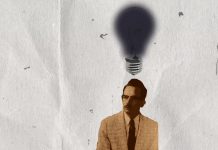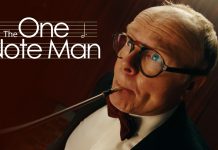Rachel Harrison Gordon’s brand-new debut short film BROKEN BIRD focuses on the challenges facing a mixed-race Jewish girl as she prepares for her Bar Mitzvah in her locality in New Jersey.
A graduate of New York’s Tisch School and a Sundance 2020 Blackhouse Fellow, Gordon hopes to pursue a film career which reflects her passion for storytelling and a desire to show all kinds of coming-of-age perspectives that continue the themes she has explored in BROKEN BIRD.
Film and TV Now had the pleasure of interviewing the director, as she reflected on her debut film.
FILM AND TV NOW: You focus on the issue of mixed-race relationships and the conflicts amidst religious conformity and specifics. It’s an interesting dynamic. How many mixed-race Jews are there in the USA?
RACHEL HARRISON GORDON: I’ve met very few, including Indigo, our lead actor. It’s part of the reason I felt driven to tell this story: I couldn’t find any visual or story references. The closest exclusively depicted Bar Mitzvah, and women were absent from those stories. Many media portrayals of Black Jews have seemed tokenized and fetishized as something strange or for comedy. I was excited to show another variation of the experience.

FTVN: Indigo Hubbard-Salk holds the film admirably as Birdie, who is trying to make sense of life, as all teenagers do. Was she your first choice for the lead role?
RHG: I didn’t write with specific actors in mind, but ended up with the ideal situation. The character of Birdie is wise beyond her years, and my first meeting with Indigo Hubbard-Salk confirmed she had the poise, wisdom, curiosity and spunk that fit the character.
Indigo was recommended to me by Spike Lee. When I met with him to discuss an early draft of the script, we watched some scenes from his Netflix show She’s Gotta Have It, and he thought she would be a great fit for the role. Indigo is also Jewish, and connected with the script in her own way.
FTVN: Has the film been screened at schools and what has the reaction been of families and teenagers?
RHG: Broken Bird world premiered in the Generation Kplus Section at the Berlin International Film Festival, and the screenings were packed with young students and families. Hearing their response has been one of the most rewarding experiences of my life.
They asked extremely thoughtful and philosophical questions during Q&A – about the meaning of the songs, about Birdie’s relationship with Blackness and Jewishness, about how it felt to grow up in multiple cultures.
There were classes of kids watching at some of the screenings, so there was a real field-trip energy with a few hundred excited and laughing young people. The movie tries to capture that spirit, so showing it in that environment was unbelievable.
I was surprised how many people thanked us for making the film, including several young mixed girls. I’ll never forget the experience. One mom thanked me for making a movie that her kid could look up to. One eleven year old girl said she was an actor and wanted to work with me.
It was a reminder that even if we couldn’t speak the same language, film crosses borders, cultures and language barriers. I made this movie so young people could see themselves on screen, and I hoped it would mean something to young people regardless of race, gender, identity or culture; I wish I had words to convey how deeply I appreciate the response. It means the world.

FTVN: Tell us about your production team.
RHG: Rashad Frett is the cinematographer of Broken Bird and was one of the first people who wanted to hear my creative ideas. He has been a big brother to me, guiding many aspects of my life and his generosity is constant.
My partner Alon Gur was a huge source of support, reading every draft of the script, scouting locations, engaging with cast and crew and various critical tasks at every stage. Film-making and production is new to us both, and I’m extremely proud of the amazing job we did for our first film.
FTVN: In addition to Hubbard-Salk, tell us about the other members of your cast.
RHG: I was connected to Chad L. Coleman – the actor playing Andre/Dad – via another Tisch professor, Abigail Bess, who had worked with him on various stage projects. I remember being so nervous the first time I called Chad, but we had a long heart-to-heart, and every conversation since has felt like one I would have with family. He said the story spoke to him, that he saw his own life in it – that was one of the earliest affirmations that the project was starting to have the kind of impact we hoped it could.
I’m also proud overall that we cast people whose real lives mirrored aspects of their characters, including Bill AIken and Mel House. Mel’s son is biracial, and both Bill and Mel expressed compassion for each of the characters’ efforts to find connection in the course of everyday struggles.
FTVN: Birdie uses Disco music, specifically BAD GIRLS by Donna Summer. How much of an influence has that genre of music had on you and are there other songs from that era that have shaped your life?
RHG: I love music. I’m transported by the images and scenes that appear in my mind when I listen. My dad and I used to exchange music when we saw each other. It was a window into his life. That was one of the first ways I expressed myself – telling stories through playlists and lyrics, especially when I struggled to articulate myself in other ways. I was hoping to capture elements of that in Birdie and Andre’s interactions. Andre is constantly surrounded by music, and he inspires Birdie to begin her own explorations.
There were stacks of records, tapes and CDs in my house––The Eurythmics, Thompson Twins, Bob Marley, The Police, Blondie…I remember getting my first laptop during the height of Napster and collecting thousands of songs from every era – over time I accumulated full discographies of artists. My attraction to older music might have to do with the fact that the most romantic memories I heard from my parents, who are divorced, were triggered by music, and tied to specific songs and dancing. To this day, one of the only sources of information I have about their shared experience together is the music they both liked.
Finally, it was important for the soundscape to represent the different worlds Birdie goes through. She grows up as a Black and Jewish girl in a white world, in a town where people live to commute to New York City by car or train, and the divorce only increases the amount of time she spends traveling, in between places. There are bridges between those places, and Nina Simone’s cover of “Land of Milk and Honey” felt like the perfect case of bridging cultures – a soulful Black woman doing her version of a Jewish classic about the just-out-of-reach heavenly land where two contrary ideas mix into something more.

FTVN: Where did you shoot the film?
RHG: My home state of New Jersey, where I was born and raised. We filmed at locations that were part of my regular experiences growing up, including my mom’s house, our Temple Oheb Shalom, a nearby Chinese food restaurant, and a diner that’s been a lifelong personal landmark.
FTVN: How long did it take to make?
RHG: We shot for five days, including several scenes that were removed. I am proud and relieved how the final version was sculpted in the editing room. It took time, but we realized saying too much made the movie say too little – less is more.
FTVN: Birdie’s hair undergoes changes during the course of the film. Tell us about the significance of this image and does it represent her character’s evolution as the film progresses?
RHG: This is based on my own hair journey. Hair is rooted to our identity and how we believe people perceive us. There were many inputs, mostly white, that dictated my idea of beauty standards. I thought straight, long hair was the prettiest, sexiest, most professional etc.
Birdie begins the film with a look that requires dedication to maintain, aiming to be part of these straight-hair standards, but she still wants to hide it in a bun so people don’t notice or comment on it – trying to make herself smaller. Her hair feels like it is a foreign part of herself.
Birdie’s experience with her dad inspires her to feel the freedom to be her natural self, especially embarking on her Bat Mitzvah, a ceremony of entering adulthood. She undoes her hair’s manufactured straightness with the moisture-added, volume textured crown we see at the end of the film.
FTVN: The film received its’ World Premiere at the 2020 Berlin International Film Festival as well as SXSW in Austin. How important are festival screenings for films like BROKEN BIRD?
RHG: They are incredibly important. I didn’t make the movie to go to festivals, but am so grateful for this opportunity to build international communities around important issues.
One of my friends in Germany told me the movie spoke to her feelings on Germany and Blackness – that there are so few black/black-biracial people there and no “German Black identity” to identify with. A lot of Black Germans look to U.S. culture to process their feelings about black race and identity. She said that she imagines those little girls felt a certain kind of “homecoming” in watching the film, because it gets to the kind of tensions that a lot of biracial people likely feel growing up and because it’s so unique, especially for a German audience. That kind of feedback will impact me for the rest of my career.
Austin is a perfect festival for this film. My partner and I visited Austin recently on a road trip this summer when I learned about their “Keep things weird” motto, and think SXSW is the perfect place to debut a film about someone learning to embrace all components of their identity. We are so excited to share it there and across the country, from New Jersey to Florida, Ohio, Colorado and California. It is what coming home feels like.

FTVN: What other themes would you like to explore in the future?
RHG: De-stigmatizing substance use disorder, exploring code-switching and legacy–what gets passed on generation to generation. I’m excited to explore some of these themes in VR/AR space as well as in commercials and music videos.
FTVN: Finally, what are you most proud of about the short?
RHG: This was my first film. I did everything I could to make an inclusive and fun-loving experience for crew and cast, and I am so proud of the aura on set, the team’s closeness and eagerness to work together again. The fact that we created something that made kids laugh – that means something to people across the world – it’s the proudest I’ve ever felt, the fulfilment I was hoping for when I switched careers and pursued filmmaking a couple years ago. I am so, so grateful.





























